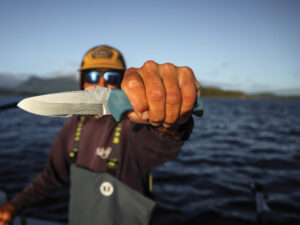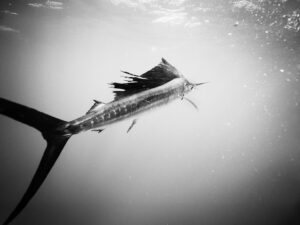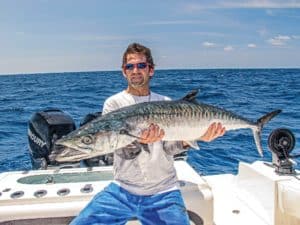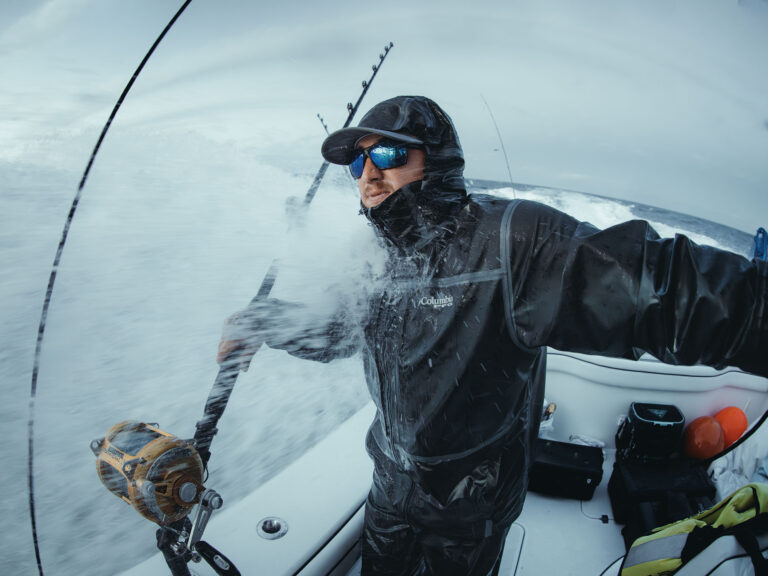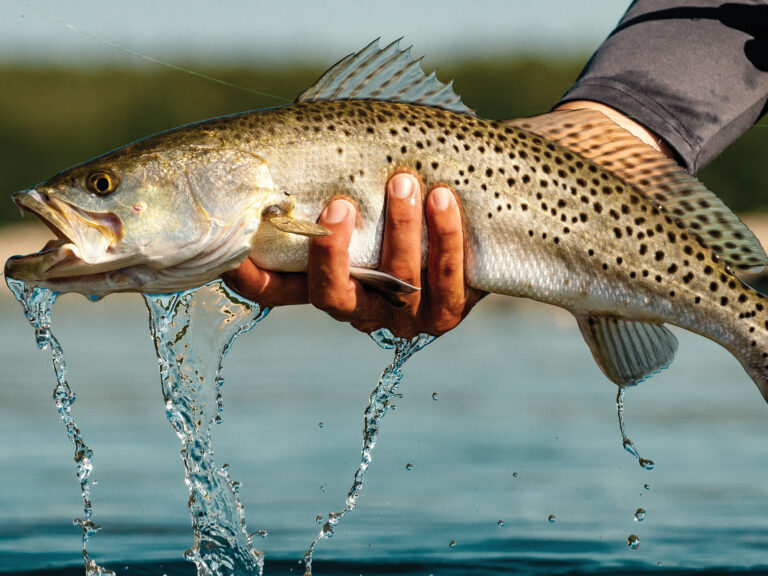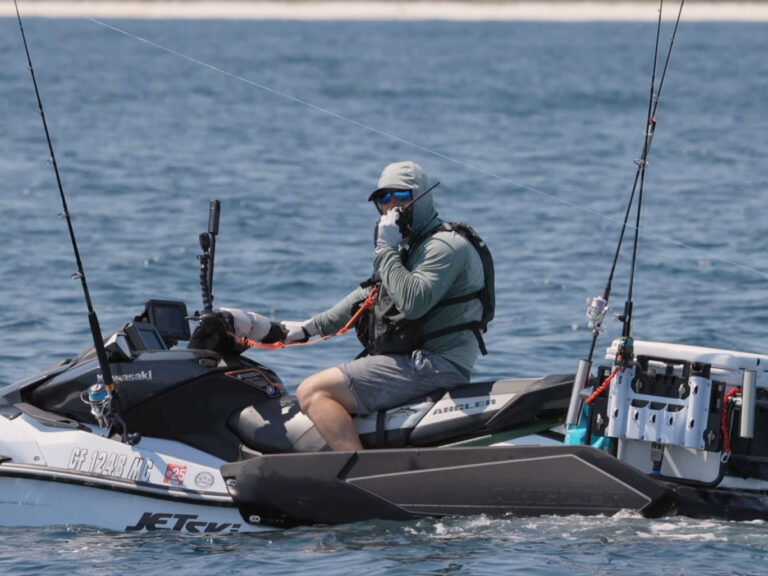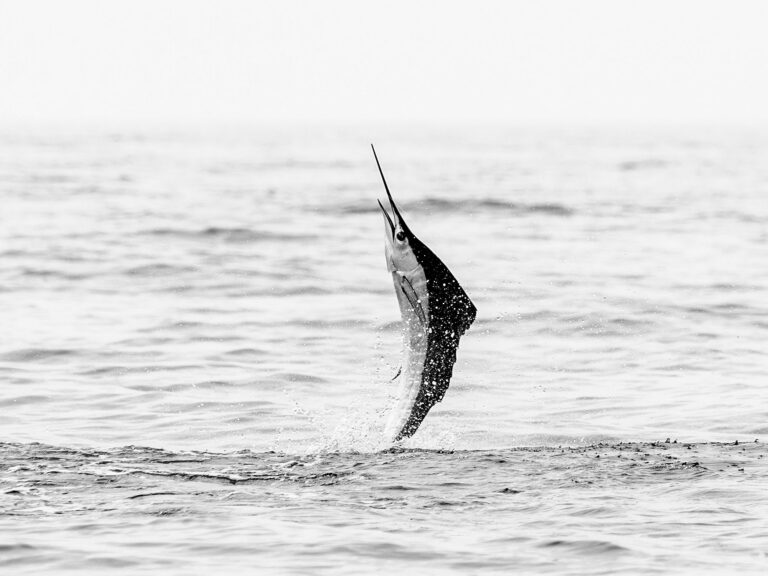Just like humans, fish have a defined temperature range in which they feel most comfortable. But unlike humans, that range varies – often considerably – from species to species. Therefore, the angler who knows the exact comfort range of the fish he’s looking for has a definite edge.
Since fish cannot add or remove layers of clothing to stay comfortable, their only option is to move to another area when they find the temperature too warm or too cool. fish are essentially cold-blooded creatures (although some tunas are slightly warm-blooded), which means they can’t regulate their body temperature internally. This makes them extremely susceptible to rapid fluctuations in water temperature. For example, plummeting temperatures can stun or even kill large numbers of fish before they’re able to move to another area. Even subtle changes in temperature will affect the behavior of fish. In some cases, a degree or two can alter the feeding habits of a species without causing them to leave the area.
Get a Thermometer!
Given that water temperature plays such a significant role in the behavior of game fish, it therefore pays to have some means of directly measuring it. A simple thermometer will do. Some anglers permanently mount an outdoor thermometer in the boat’s bait well, which is an ideal location as long as the well circulates raw water from outside the boat. Then there are electronic thermometers, including stand-alone gauges and those integrated with fishfinders and other electronics.
A quick glance at the thermometer will let you know if you should bother targeting a particular species. Striped bass, for example, typically head for deeper water when the shallows are too hot or cold for them. So why beat your brains out trying to catch stripers near shore in midsummer when the water temperature is over 75 degrees? Better to be looking for bluefish, which are happy as clams until the water passes the mid-80-degree mark.
Of course, there are some exceptions to this rule. For example, a high abundance of food will often keep game fish in an area that’s a few degrees outside their preferred range.
Optimum Temperatures
Fish are, of course, happiest when they’re in water of their optimum temperature range. This is especially true of many inshore species, such as striped bass, bluefish, bonefish and tarpon. Tarpon, for example, can often be found in deep channels when the water temperature is barely 70 degrees, and will only move onto the flats to feed when the water is within their optimum temperature range.
The accompanying chart is the product of hundreds of observations by fellow anglers and marine biologists around the country. If you fish constantly with some sort of water temperature gauge on board and pay careful attention to it, as many of us have learned to do, you will enjoy better fishing results.
Offshore Temperatures
Modern satellite technology has enabled us to determine offshore sea-surface temperatures accurately and in excellent detail. There are even several companies that provide this information in chart form for subscribers.
When a large body of warmer or cooler water moves into an area where those temperatures are not normally encountered, it often brings “exotic” species with it. This is why many tropical and subtropical game fish were caught from California to northern Washington during the 1997 El Ni¿¿o. During this same period, overly warm water off some parts of Central and South America pushed those same species out of areas where they are normally abundant.
But if you wait for the next El Ni¿¿o or La Ni¿¿a to cause unusual fish movement, you’ll be missing out on a lot of action. On the East Coast, large fingers or eddies of warm, tropical water often break off from the Gulf Stream and move into cooler water, bringing with them warm-water game fish. Billfish appear off New England every year because of this phenomenon.
On a more day-to-day level, noticing the change of a degree or two that delineates the edge of a current can pay big dividends. Such current edges, or rips, tend to concentrate baitfish, and fishing on the side of the rip where the temperature is best for the species you’re seeking can make all the difference in the world. This is why no savvy offshore skipper would ever leave the dock without some sort of water temperature gauge.
Sudden Changes
A rapid decrease in water temperature can chase fish away or bring them in. Even a strong breeze that lowers the water temperature a few degrees can affect the presence or behavior of fish.
If the temperature of the water drops too fast, fish will sometimes leave the area, even if the temperature remains within their range of tolerance. Why? They simplydon’t like the sudden change.
In some cases, the water temperature can plummet ten degrees or more overnight due to the passage of a cold front. Even if it’s calm and sunny the next day, the ocean may seem like a biological desert. That’s how important water temperature can be.
| Species | Lower Avoidance | Optimum | Upper Avoidance | Comments/Updates |
| Albacore | 59 | 62-65 | 66 | ¿ |
| Amberjack | 60 | 65-75 | 80+ | ¿ |
| Atlantic Bonito | 60 | 65-75 | 80+ | ¿ |
| Atlantic Cod | 31 | 44-49 | 59 | ¿ |
| Atlantic Mackerel | 40 | 45-55 | 70 | ¿ |
| Barracuda | 55 | 72-80 | 86 | RDS (Florida) |
| Bigeye Tuna | 52 | 62-74 | 80 | RDS (Equador) |
| Blackfin Tuna | 65 | 70-75 | 82 | ¿ |
| Black Marlin | 68 | 72-82 | 87 | RDS (Panama/C.R.) |
| Bluefin Tuna | 50 | 60-72 | 82 | RDS (Cozumel) |
| Bluefish | 50 | 66-72 | 84 | ¿ |
| Blue Marlin | 70 | 74-82 | 88 | ¿ |
| Bonefish | 60 | 72-84 | 92+ | RDS (Florida) |
| Dolphin (fish) | 70 | 72-78 | 82 | ¿ |
| Fluke (Summer Flounder) | 56 | 62-66 | 72 | ¿ |
| Haddock | 36 | 42-48 | 52 | ¿ |
| Jack Crevalle | 65 | 70-85 | 90 | ¿ |
| Kelp Bass | 62 | 64-68 | 72 | ¿ |
| King Mackerel | 65 | 68-76 | 88 | ¿ |
| Permit | 70 | 75-85 | 92 | RDS (Florida) |
| Pollock | 33 | 40-50 | 60 | ¿ |
| Pompano | 65 | 70-82 | 85+ | ¿ |
| Red Drum (Channel Bass) | 52 | 70-90 | 90+ | RDS (Florida) |
| Red Snapper | 50 | 55-65 | 70+ | ¿ |
| Sailfish | 68 | 72-82 | 88 | ¿ |
| Skipjack Tuna | 50 | 58-62 | 70 | ¿ |
| Snook | 60 | 70-82 | 90 | ¿ |
| Spotted Seatrout | 48 | 68-78 | 88 | ¿ |
| Striped Bass | 50 | 55-65 | 75 | T. Mleczko |
| Striped Marlin | 61 | 68-76 | 80 | ¿ |
| Swordfish | 50 | 60-70 | 80 | ¿ |
| Tarpon | 70 | 75-90 | 100+ | Once at 62F |
| Tautog | 45 | 50-60 | 76 | Updated info from SWS reader |
| Weakfish | 45 | 56-68 | 78 | ¿ |
| White Marlin | 65 | 68-78 | 80+ | ¿ |
| White Seabass | 58 | 64-68 | 74 | ¿ |
| Winter Flounder | 35 | 48-52 | 64 | ¿ |
| Yellowfin Tuna | 64 | 72-82 | 80 | RDS (All Oceans) |
| Yellowtail (Pacific) | 60 | 62-66 | 70 | ¿ |
¿


